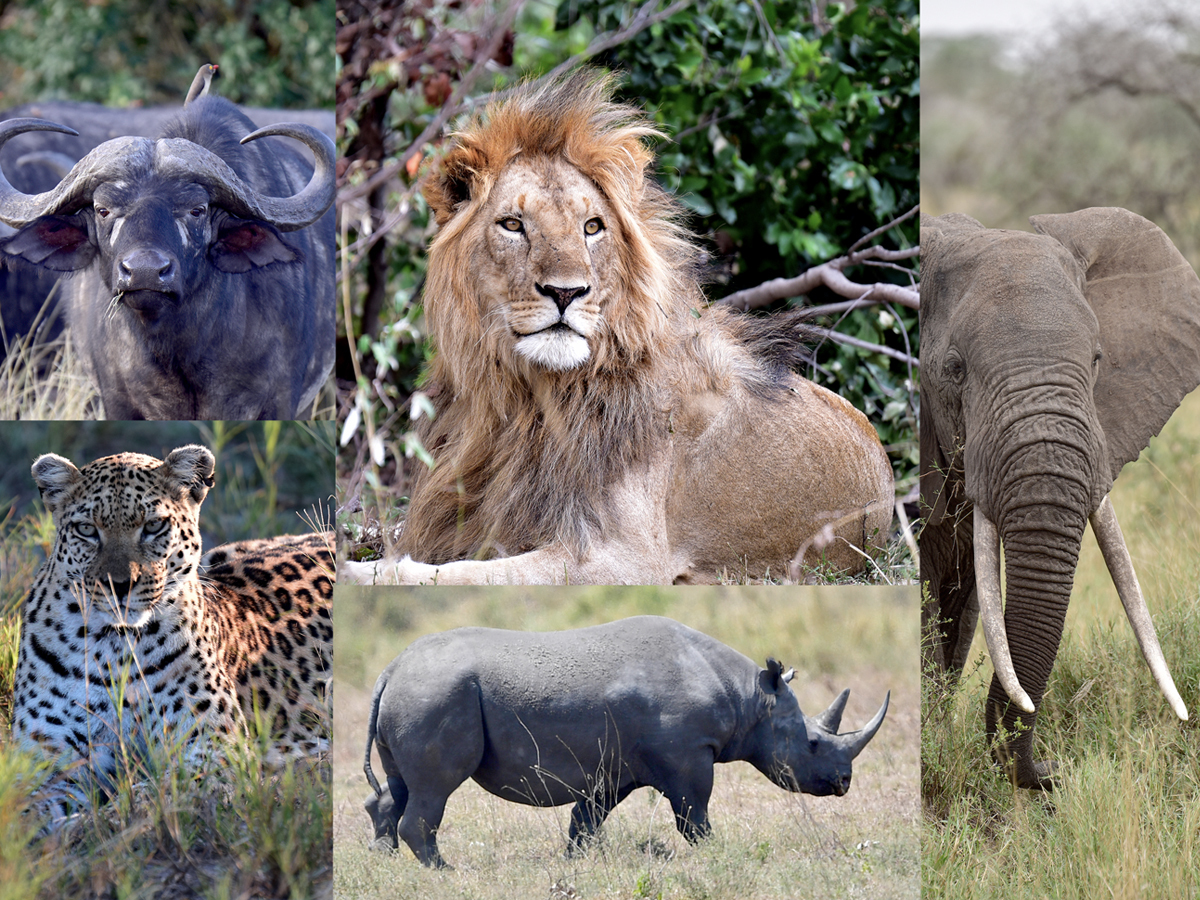
The Big Five game animals in Africa are the lion, leopard, rhinoceros, elephant, and Cape buffalo. These creatures are famous as some of Africa’s most renowned large animals. The term ‘Big Five’ was initially coined by big-game hunters, designating them as the five most formidable species to hunt on foot in Africa. In contemporary times, the Big 5 game has gained widespread usage among wildlife enthusiasts.
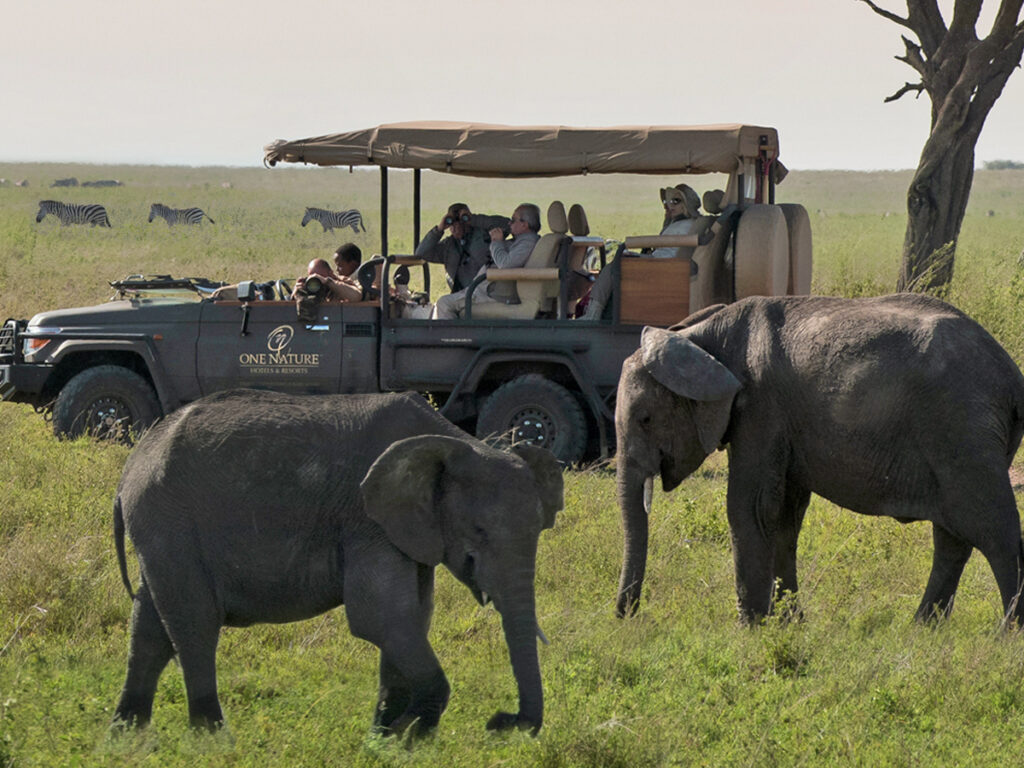
The Serengeti National Park stands as the preeminent safari destination for those eager to encounter the Big 5. The sheer abundance of wildlife in this iconic wilderness ensures an extraordinary opportunity to witness the Big 5 in their natural habitat. The Serengeti’s charm extends to the possibility of ticking off the entire Big 5 list during a single safari or within a solitary game drive or day.
For countless travelers with ‘ticking off the Big 5’ at the top of their bucket lists, the Serengeti’s unique blend of biodiversity, captivating landscapes, and exhilarating game-viewing experiences make it an unparalleled choice for an unforgettable wildlife adventure.
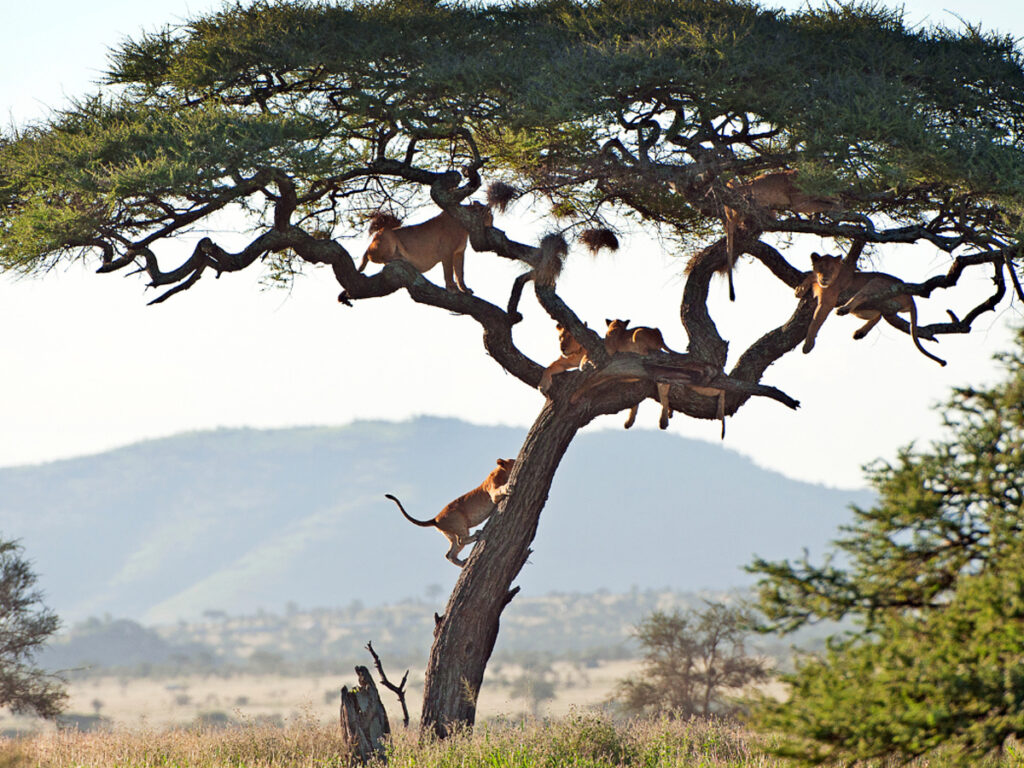
In the animal kingdom of the Serengeti National Park, lions are the majestic monarchs. Pride of 3000 lions reigns the Serengeti, making it home to one of the continent’s most robust lion populations, surpassing those in neighboring countries. On a game drive, you may spot a pride of lions gracefully strolling in dignified procession, catnapping, or sitting atop ancient kopjes.
Fun fact: Tree-climbing lions are a sight that cannot be missed. They can gracefully lift their massive bodies up the tree to get the perfect vantage point for their prey.
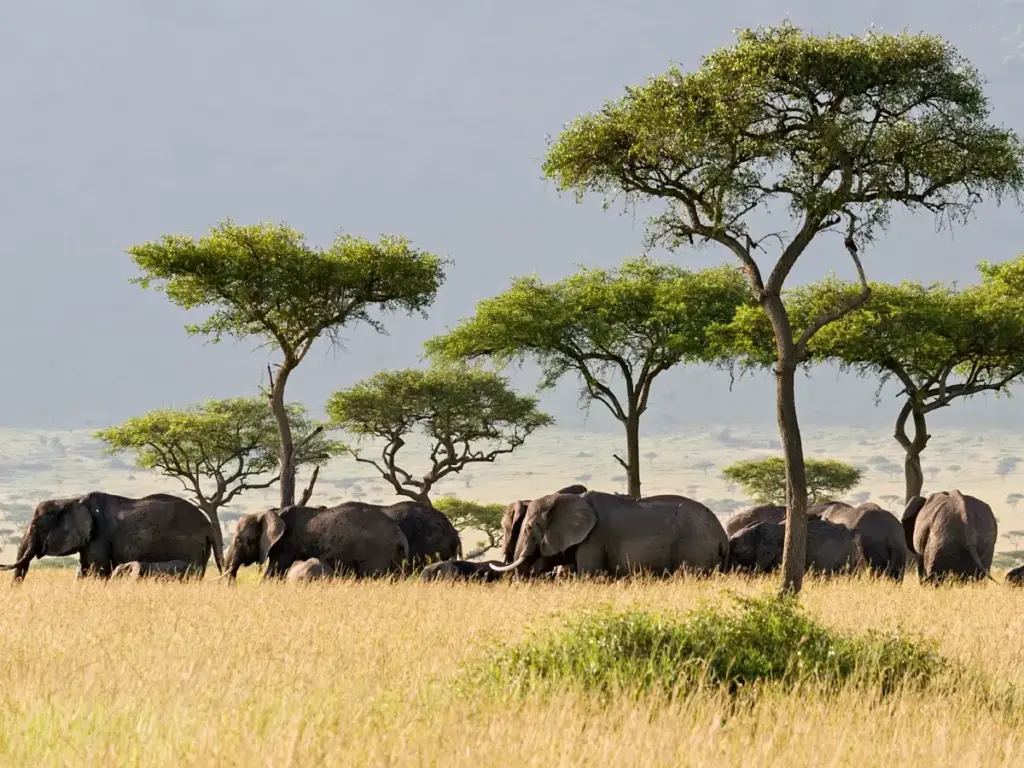
African elephant, the world’s largest land animal, reaches towering heights of up to 9 ft and weighs 3000 lbs. Over 7000 elephants call the Serengeti their homes, starkly contrasting to the declining elephant populations elsewhere. It is a race against time to witness these awe-inspiring creatures. On a game drive, catch these gentle giants strolling harmoniously as a family. Some quench their thirst at a waterhole, their colossal frames mirrored in the tranquil surface, while the playful young ones splash about.
Fun fact: African elephants claim the ‘Largest Brain’ title among all terrestrial creatures. These colossal thinkers can tip the scales at a mind-boggling 11 lbs.
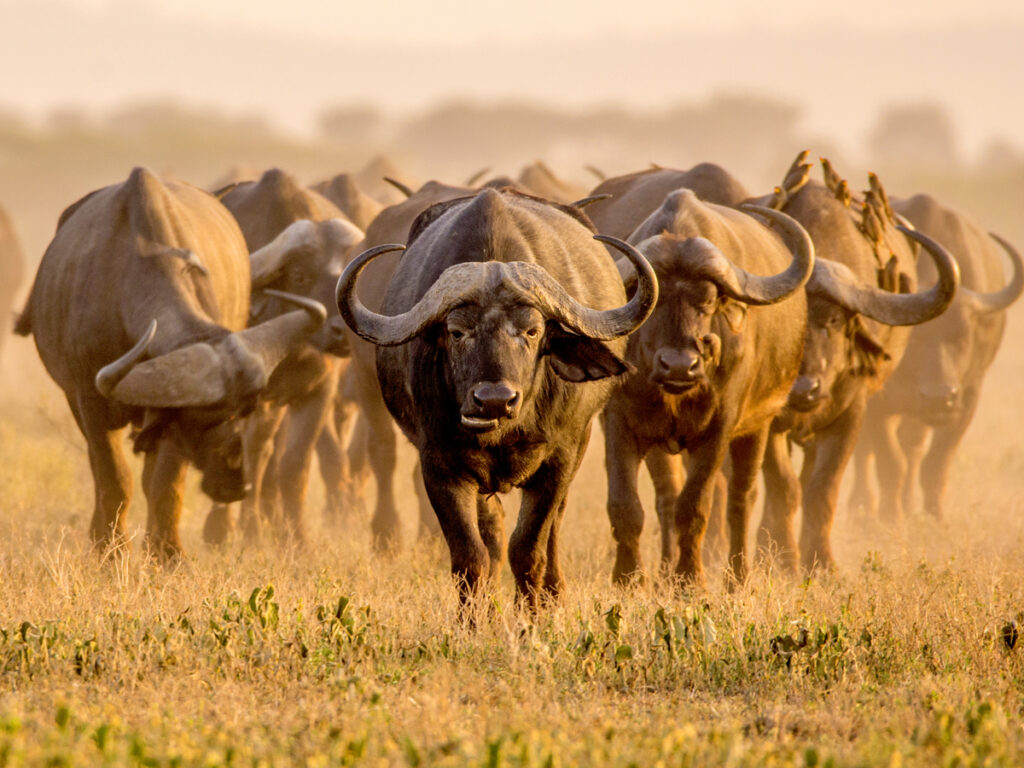
Cape buffalos in the Serengeti emerge as the unsung heroes of the wildlife. With their formidable curving horns, they are the architects of survival, crafting the perfect defense. With over 30,000 roaming the savannah, they are foraging for their daily sustenance, always moving together in a synchronized rhythm.
Fun fact – Cape buffalos known for their ambush-style hunting and aggressive, unforgiving nature have earned nicknames like “The Black Death” and “Widow Maker.”
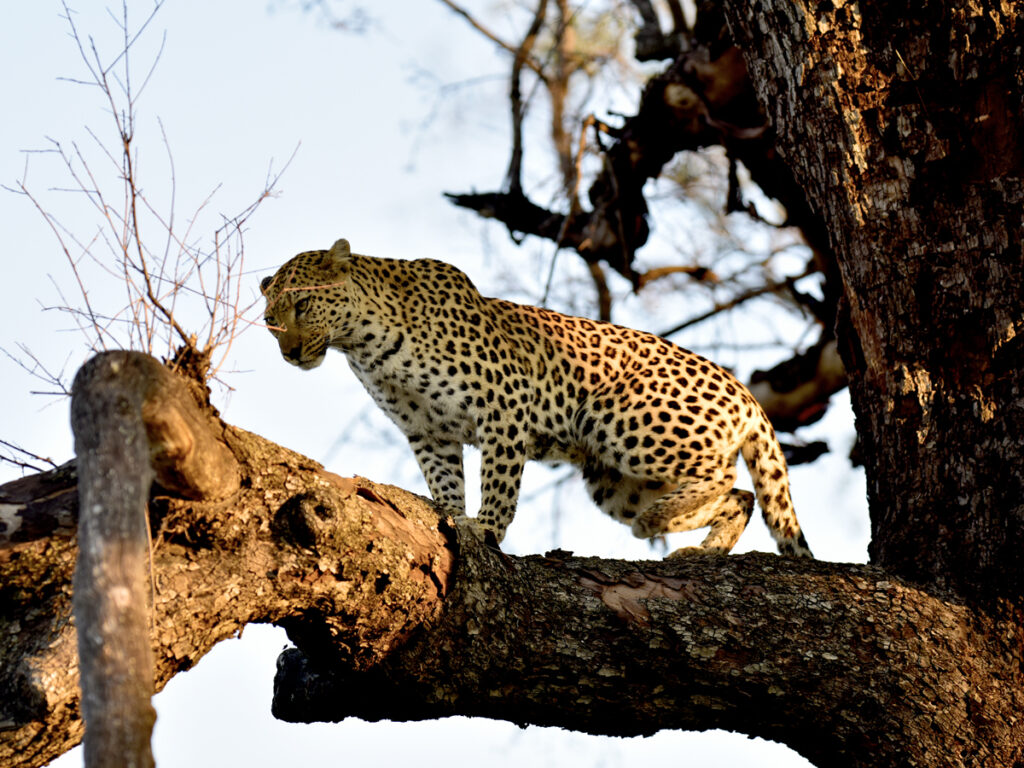
Cloaked in their elegant rosette attire, leopards are the style icons of the wild, effortlessly blending sophistication and stealth. A group of leopards is known as a “leap,” but such occasions are a rarity. These feline predators are typically solitary creatures, coming together mainly during mating season. Serengeti, home to about 1000 leopards, will allow you to spot one lounging comfortably on the lower branches of a tree, seemingly unfazed by the world around it.
Fun fact: Leopards are lightning-fast, sprinting up to 36 mph. They are also incredible jumpers, capable of leaping 20 ft forward through the air.

Rhinos shape the landscape of the Serengeti with their powerful presence and impressive sense of smell, making them the savannah’s inquisitive neighbors. Female rhinos, capable of giving birth only once every five years, make the encounters precious. Ngorongoro Crater in Tanzania is a rare haven for spotting black rhinos in their natural habitat. These creatures are threatened by severe poaching for their horns, emphasizing the urgency of conservation efforts.
On your game drive, you will mostly find a rhino wallowing in the mud. This behavior helps them cool off and acts as a natural sunscreen, protecting their sensitive skin from the African sun.
Fun Fact: Rhinos are not social butterflies with each other. They sure know how to have a blast with their feathered friends. Oxpeckers, or tick birds, have a cozy spot on the rhino’s back, where they feast on pesky parasitic insects that call the rhino’s thick skin home.
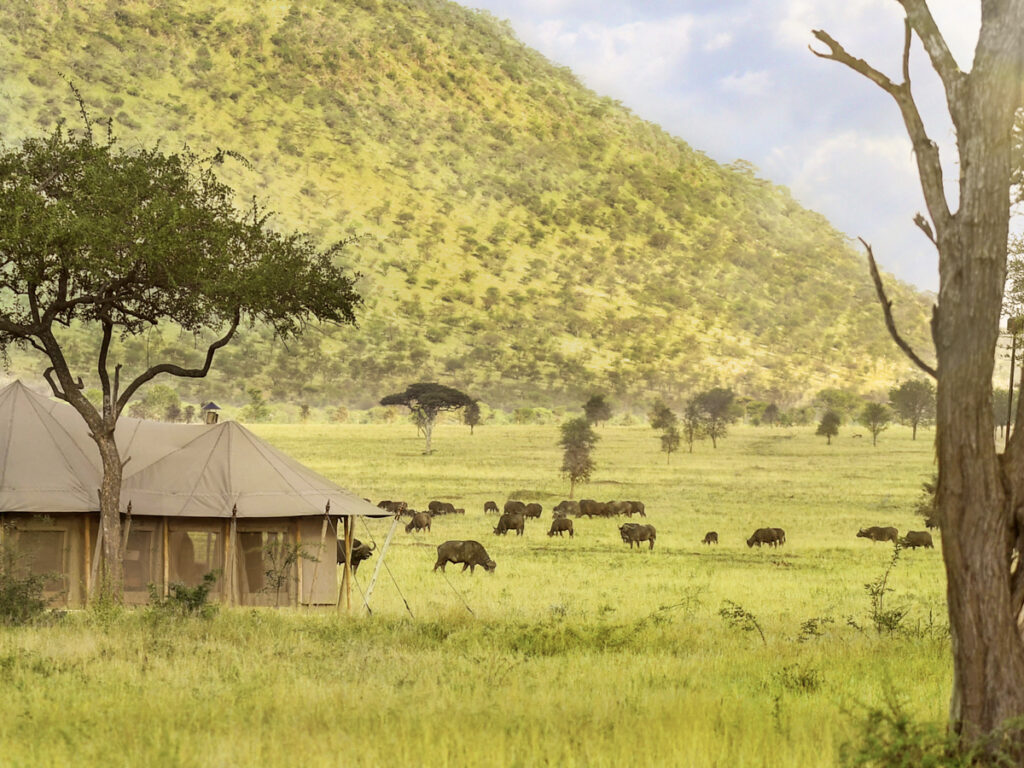
One Nature’s strategically positioned destinations near game-rich areas solidify it as the ultimate choice for observing the Big 5. Whether you are a seasoned wildlife enthusiast or a first-time safari adventurer, we ensure every visit is a memorable journey into the heart of the wilderness.
The Big 5 of Africa is an iconic symbol of nature’s wonder and the continent’s commitment to conservation. Notably, the African lion and African leopard are categorized as vulnerable species. According to the IUCN’s 2021 assessment, the African savanna elephant has been designated as endangered. Meanwhile, the southern white rhinoceros and African buffalo are classified as near threatened.
At One Nature Nyaruswiga in the heart of central Serengeti, we offer a front-row seat to witness Africa’s Big 5. With us, you are setting out on an incredible safari adventure and contributing to the ongoing efforts to protect and preserve these magnificent creatures for generations.